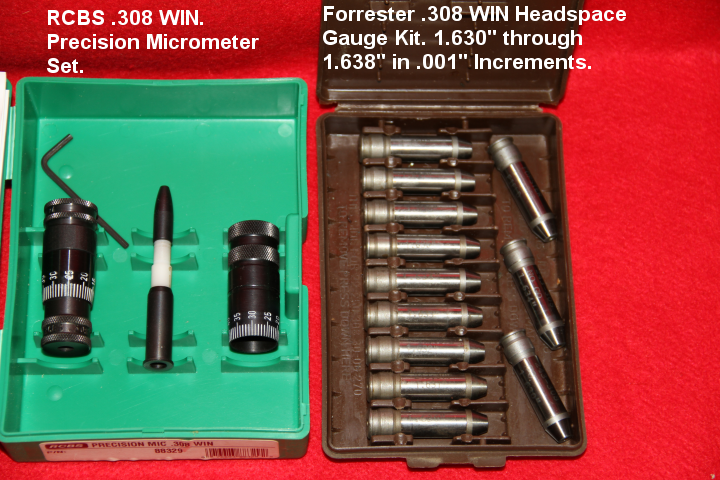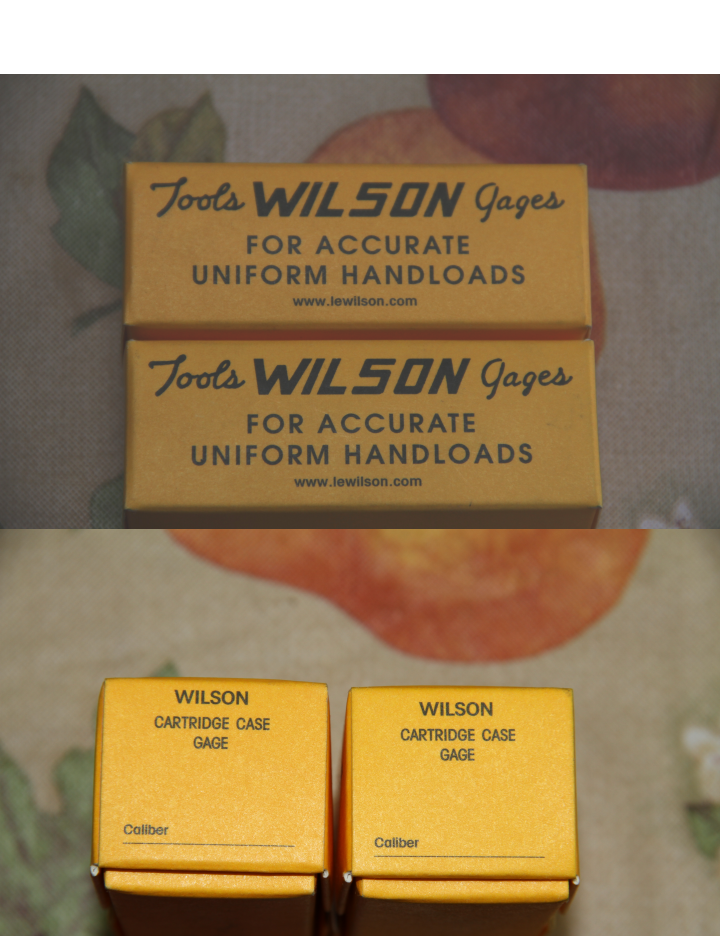WendyJ mentions:
Understandable as T.OHeir mentions:
Maybe to make things a little clear we could look at a few definitions:
Now if we look at a SAAMI Drawing of Cartridge and Chamber here is what we typically see:
{Ron, The SAAMI drawings all have a copyright notice at the bottom that you clipped. You need their written permission to post them here. Please see the board policy on posting copyrighted materials. Otherwise, you will need to redraw to the dimensions yourself.}
Looking at the cartridge dimensions there is no dimension labeled or called out as Headspace. However, the chamber dimensions clearly call out a headspace dimension. Additionally there are headspace gauges but they are not a gauge the average shooter sees or uses.
Headspace Gauges:

The headspace gauges are pictured on the right. Unfortunately over the years a good number of manufacturers have taken to calling gauges which measure cartridge dimensions headspace gauges. Many shooters have come to accept this practice and frequently refer to a "cartridge headspace gauge" and a "chamber headspace gauge". A simple Google of "headspace gauge" will bring up a collage of both types of gauges. The Hornady Lock-N-Load Headspace Gauge 5 Bushing Set with Comparator is a good example of how the terms are tossed around. Everybody wants to sell something.
Anyway, this is the issue with cartridges do not have headspace explained. I do not see the new terminology going away anytime soon so take it for what it is worth. I try to be specific when I use the terms and try to avoid using headspace gauge unless I actually am referring to a headspace gauge.
Ron
I may be wrong but I use a headspace compareter to measure how far I've set the shoulders back on bottleneck cases. Oheir states there is no headspace on a cartridge. Maybe I'm using wrong words. I am wanting the 7 mag set for 7 mag 300 wsm 300 WM and 338 rum. Will also purchase the 308 for various pickup 30-06 -243 and 7-08 since they are all same she'll holder. Can't find a you tube video on them but it does make sense to set back .002 or whatever I need verses moving dies every time I change brass companies.
Understandable as T.OHeir mentions:
Shell holders have nothing whatever to do with headspace. Cartridges do not have headspace.
Maybe to make things a little clear we could look at a few definitions:
HEADSPACE:
The distance from the face of the closed breech of a firearm to the surface in the chamber on which the cartridge case seats.
HEADSPACE GAGE:
A device used in a firearm to determine the distance between the breech face and the chamber surface on which the cartridge seats. Also called Breeching Plug.
Now if we look at a SAAMI Drawing of Cartridge and Chamber here is what we typically see:
{Ron, The SAAMI drawings all have a copyright notice at the bottom that you clipped. You need their written permission to post them here. Please see the board policy on posting copyrighted materials. Otherwise, you will need to redraw to the dimensions yourself.}
Looking at the cartridge dimensions there is no dimension labeled or called out as Headspace. However, the chamber dimensions clearly call out a headspace dimension. Additionally there are headspace gauges but they are not a gauge the average shooter sees or uses.
Headspace Gauges:

The headspace gauges are pictured on the right. Unfortunately over the years a good number of manufacturers have taken to calling gauges which measure cartridge dimensions headspace gauges. Many shooters have come to accept this practice and frequently refer to a "cartridge headspace gauge" and a "chamber headspace gauge". A simple Google of "headspace gauge" will bring up a collage of both types of gauges. The Hornady Lock-N-Load Headspace Gauge 5 Bushing Set with Comparator is a good example of how the terms are tossed around. Everybody wants to sell something.
Anyway, this is the issue with cartridges do not have headspace explained. I do not see the new terminology going away anytime soon so take it for what it is worth. I try to be specific when I use the terms and try to avoid using headspace gauge unless I actually am referring to a headspace gauge.
Ron

